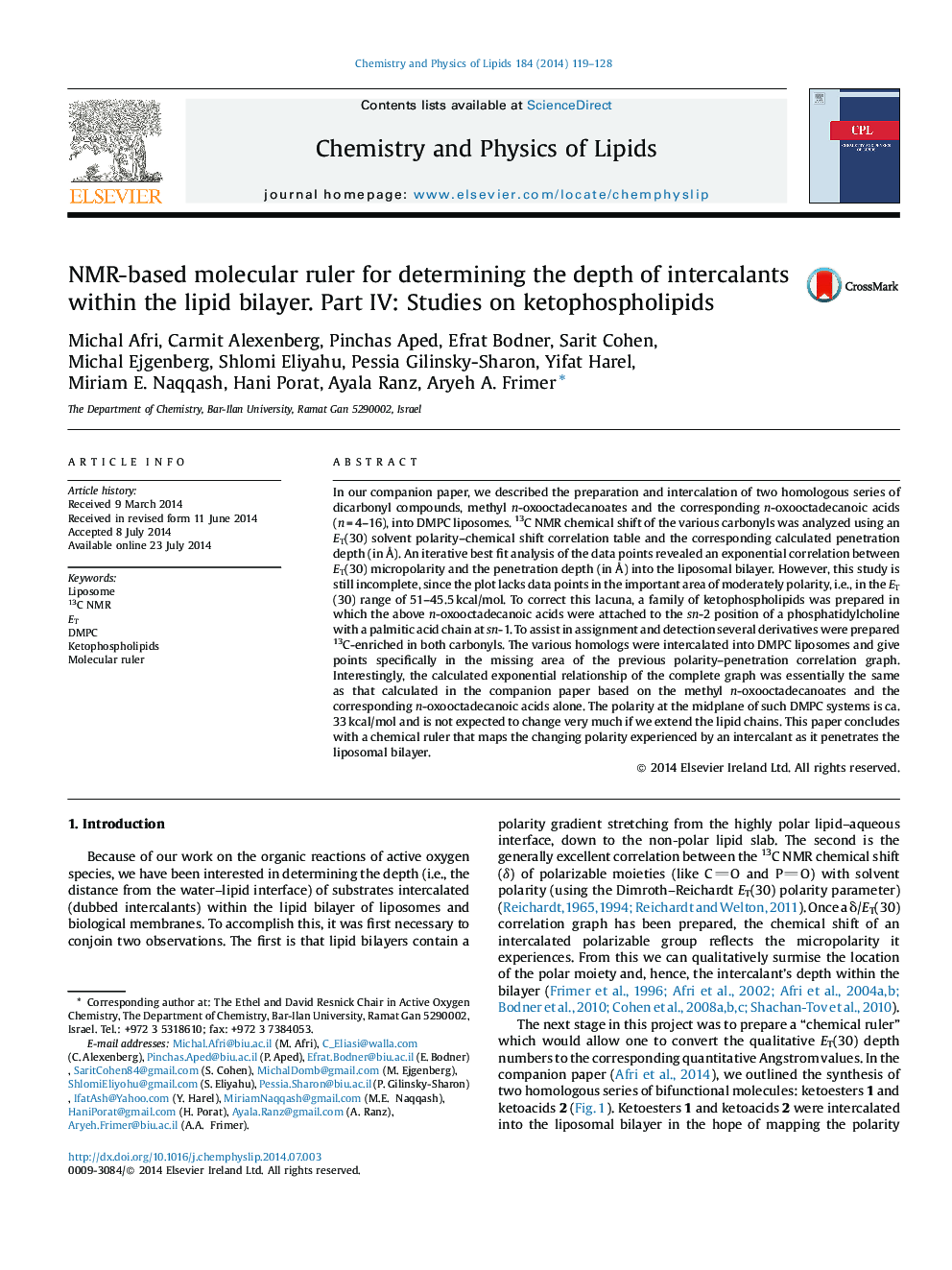| کد مقاله | کد نشریه | سال انتشار | مقاله انگلیسی | نسخه تمام متن |
|---|---|---|---|---|
| 1251738 | 1496293 | 2014 | 10 صفحه PDF | دانلود رایگان |

• Molecular rulers allow for the depth determination of intercalants within bilayers.
• The 13C NMR shift of a carbonyl correlates with the polarity it experiences.
• This polarity correlates with intercalant’s Angstrom distance from interface.
• Intercalated oxooctadecanoic acids, esters and lipids yield carbonyl data points.
• Iterative best fit analysis of points yields molecular ruler as exponential curve.
In our companion paper, we described the preparation and intercalation of two homologous series of dicarbonyl compounds, methyl n-oxooctadecanoates and the corresponding n-oxooctadecanoic acids (n = 4–16), into DMPC liposomes. 13C NMR chemical shift of the various carbonyls was analyzed using an ET(30) solvent polarity–chemical shift correlation table and the corresponding calculated penetration depth (in Å). An iterative best fit analysis of the data points revealed an exponential correlation between ET(30) micropolarity and the penetration depth (in Å) into the liposomal bilayer. However, this study is still incomplete, since the plot lacks data points in the important area of moderately polarity, i.e., in the ET(30) range of 51–45.5 kcal/mol. To correct this lacuna, a family of ketophospholipids was prepared in which the above n-oxooctadecanoic acids were attached to the sn-2 position of a phosphatidylcholine with a palmitic acid chain at sn-1. To assist in assignment and detection several derivatives were prepared 13C-enriched in both carbonyls. The various homologs were intercalated into DMPC liposomes and give points specifically in the missing area of the previous polarity–penetration correlation graph. Interestingly, the calculated exponential relationship of the complete graph was essentially the same as that calculated in the companion paper based on the methyl n-oxooctadecanoates and the corresponding n-oxooctadecanoic acids alone. The polarity at the midplane of such DMPC systems is ca. 33 kcal/mol and is not expected to change very much if we extend the lipid chains. This paper concludes with a chemical ruler that maps the changing polarity experienced by an intercalant as it penetrates the liposomal bilayer.
Figure optionsDownload as PowerPoint slide
Journal: Chemistry and Physics of Lipids - Volume 184, December 2014, Pages 119–128